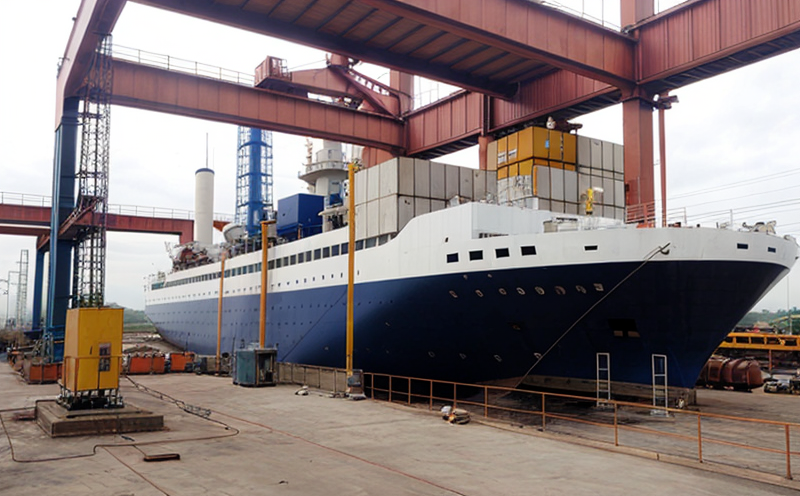Process vessel inspection
The process of inspecting pressure vessels and storage tanks is critical to ensuring safe and reliable operation in various industrial sectors such as petrochemicals, pharmaceuticals, oil & gas, and chemical processing. These vessels are used for the storage, handling, and transport of hazardous materials under extreme conditions. Ensuring their integrity prevents potential accidents that could lead to severe injuries or fatalities, environmental contamination, and financial losses.
Process vessel inspection encompasses a range of non-destructive testing (NDT) techniques aimed at identifying defects without compromising the structural integrity of the vessel. The primary goal is to detect flaws such as cracks, corrosion, wear, and other anomalies that can impact the vessel's performance over time. This service ensures compliance with industry standards like ASME Section VIII Division 1 and EN 15230.
During an inspection, various methods are employed depending on the type of defect being sought. For example:
- Visual Inspection: A thorough visual examination by trained personnel to identify visible signs of damage or deterioration.
- Dye Penetrant Testing (DPT): Utilizes fluorescent dyes or water-washable penetrants to highlight surface cracks and discontinuities.
- Magnetic Particle Inspection (MPI): Detects surface and subsurface flaws using magnetic fields applied to ferromagnetic materials.
- Ultrasonic Testing: Measures the internal structure of a component through sound wave propagation, detecting defects down to micrometer levels.
- Radiographic Testing (RT): Generates images revealing internal structures and discontinuities within the vessel walls.
The choice of inspection techniques depends on factors such as material type, design pressure, and service environment. The combination of these methods allows for a comprehensive assessment of each vessel's condition.
Our team of experts uses state-of-the-art equipment to ensure accurate and reliable inspections. We provide detailed reports outlining any defects found along with recommended corrective actions where necessary. Our services are designed to meet or exceed the requirements set forth by relevant international standards, ensuring your vessels remain compliant and safe for continued operation.
Why It Matters
The importance of process vessel inspection cannot be overstated in industries reliant on high-pressure systems. Regular inspections help prevent catastrophic failures that could result in significant disruptions to production schedules. By identifying potential issues early, we can implement preventive maintenance strategies that extend the lifespan of your equipment and reduce operational risks.
Compliance with regulatory requirements such as ASME Section VIII Division 1 ensures that you are meeting industry best practices. This not only protects your company from legal liabilities but also enhances its reputation for safety and reliability among clients and stakeholders. Additionally, maintaining proper documentation through thorough inspection reports supports long-term asset management decisions.
Our comprehensive approach to process vessel inspections goes beyond mere compliance; it focuses on continuous improvement by leveraging advanced technologies and best practices. This proactive stance ensures not only current safety but also future-proofing your facilities against emerging challenges in the ever-evolving landscape of industrial operations.
Scope and Methodology
| Inspection Type | Description | Application |
|---|---|---|
| Visual Inspection | A detailed examination of the vessel's exterior for visible signs of damage or wear. | Initial assessment before more invasive tests. |
| Dye Penetrant Testing (DPT) | An inspection method using fluorescent dyes to detect surface cracks and discontinuities. | For detecting superficial flaws in materials like stainless steel and aluminum. |
| Magnetic Particle Inspection (MPI) | Involves applying magnetic fields to ferromagnetic materials to identify surface and subsurface defects. | Effective for identifying cracks in carbon steels, cast irons, and some non-ferrous alloys. |
| Ultrasonic Testing | Uses sound waves to measure the internal structure of a component, detecting defects down to micrometer levels. | For assessing thickness loss or other internal flaws in various materials. |
| Radiographic Testing (RT) | Involves generating images revealing internal structures and discontinuities within the vessel walls. | Used for detecting cracks, porosity, and other anomalies inside thick-walled vessels. |
The scope of our process vessel inspection service extends beyond just performing these tests; it also includes:
- Thorough documentation of all findings.
- Identification and prioritization of necessary corrective actions.
- Compliance with applicable international standards such as ASME Section VIII Division 1, EN 15230, and other relevant codes.
This structured approach ensures that each inspection is thorough yet efficient, delivering actionable insights directly to decision-makers responsible for maintaining operational excellence within their respective organizations.
Customer Impact and Satisfaction
The impact of our process vessel inspection services on customer satisfaction is profound. By consistently delivering accurate, reliable results backed by detailed documentation, we help clients make informed decisions regarding the maintenance and replacement schedules for their critical assets. This proactive approach not only enhances safety but also contributes significantly to reducing downtime associated with unexpected failures.
Our commitment to excellence has earned us a reputation as leaders in this field. Many of our long-term clients attribute their success to regular, thorough inspections conducted by our skilled teams. They appreciate the peace of mind that comes from knowing that their vessels are in good hands and operating safely within regulatory guidelines.
We pride ourselves on maintaining high levels of customer satisfaction through exceptional service quality. Our dedicated staff works closely with each client throughout the inspection process to ensure they understand every step taken during the evaluation. This collaborative approach fosters trust between us and our clients, leading to lasting partnerships built on mutual respect and shared goals.





